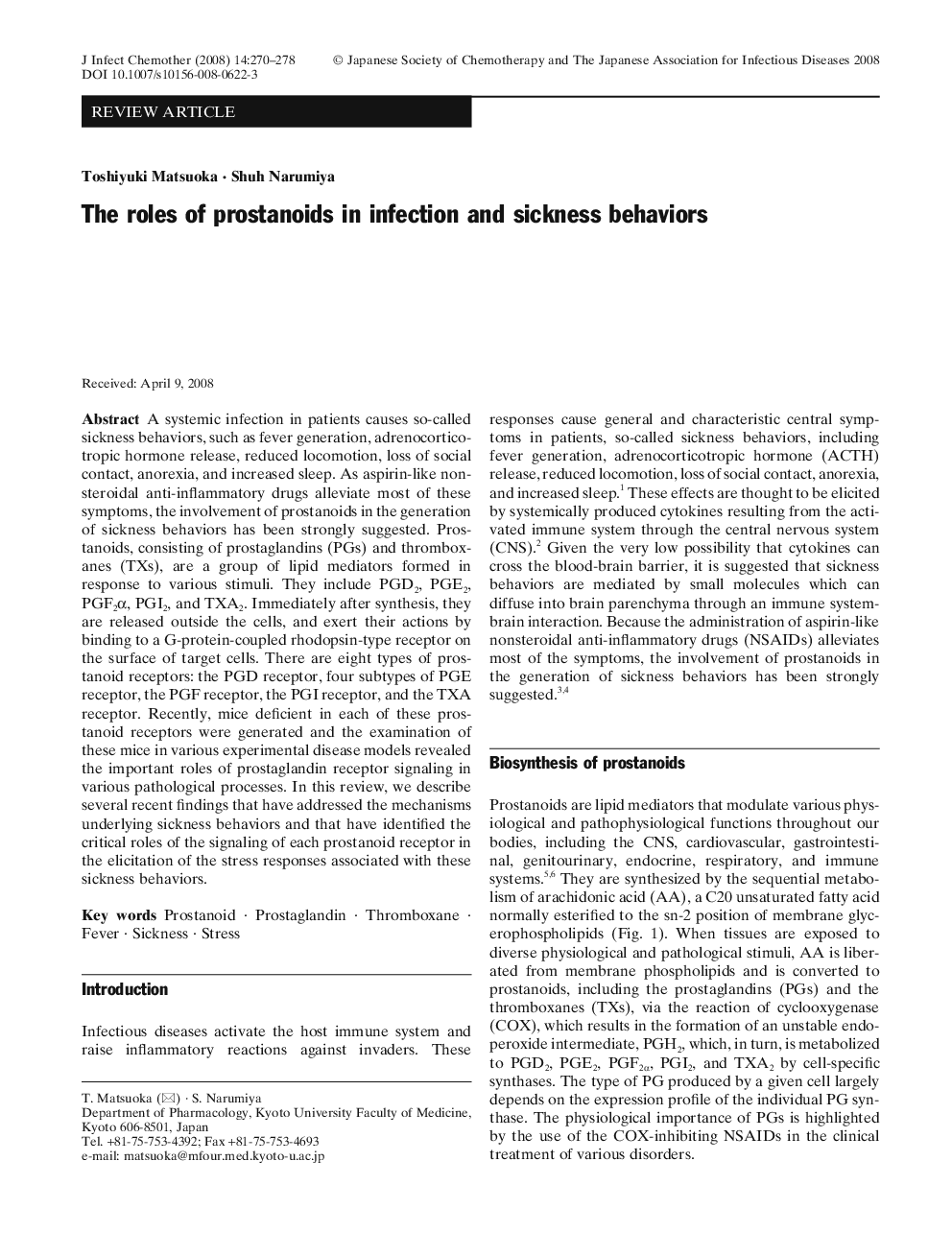| کد مقاله | کد نشریه | سال انتشار | مقاله انگلیسی | نسخه تمام متن |
|---|---|---|---|---|
| 6124249 | 1219972 | 2008 | 9 صفحه PDF | دانلود رایگان |
عنوان انگلیسی مقاله ISI
The roles of prostanoids in infection and sickness behaviors
دانلود مقاله + سفارش ترجمه
دانلود مقاله ISI انگلیسی
رایگان برای ایرانیان
کلمات کلیدی
موضوعات مرتبط
علوم زیستی و بیوفناوری
ایمنی شناسی و میکروب شناسی
میکروبیولوژی و بیوتکنولوژی کاربردی
پیش نمایش صفحه اول مقاله

چکیده انگلیسی
A systemic infection in patients causes so-called sickness behaviors, such as fever generation, adrenocorticotropic hormone release, reduced locomotion, loss of social contact, anorexia, and increased sleep. As aspirin-like non-steroidal anti-inflammatory drugs alleviate most of these symptoms, the involvement of prostanoids in the generation of sickness behaviors has been strongly suggested. Prostanoids, consisting of prostaglandins (PGs) and thromboxanes (TXs), are a group of lipid mediators formed in response to various stimuli. They include PGD2, PGE2, PGF2α, PGI2, and TXA2. Immediately after synthesis, they are released outside the cells, and exert their actions by binding to a G-protein-coupled rhodopsin-type receptor on the surface of target cells. There are eight types of prostanoid receptors: the PGD receptor, four subtypes of PGE receptor, the PGF receptor, the PGI receptor, and the TXA receptor. Recently, mice deficient in each of these prostanoid receptors were generated and the examination of these mice in various experimental disease models revealed the important roles of prostaglandin receptor signaling in various pathological processes. In this review, we describe several recent findings that have addressed the mechanisms underlying sickness behaviors and that have identified the critical roles of the signaling of each prostanoid receptor in the elicitation of the stress responses associated with these sickness behaviors.
ناشر
Database: Elsevier - ScienceDirect (ساینس دایرکت)
Journal: Journal of Infection and Chemotherapy - Volume 14, Issue 4, 2008, Pages 270-278
Journal: Journal of Infection and Chemotherapy - Volume 14, Issue 4, 2008, Pages 270-278
نویسندگان
Toshiyuki Matsuoka, Shuh Narumiya,